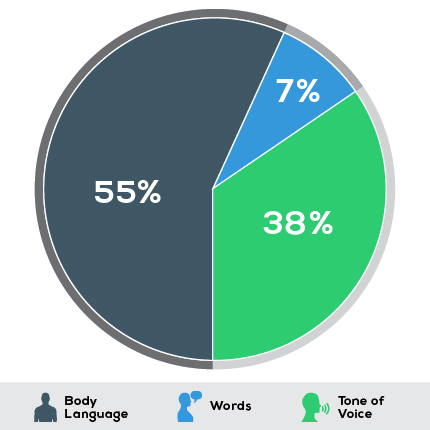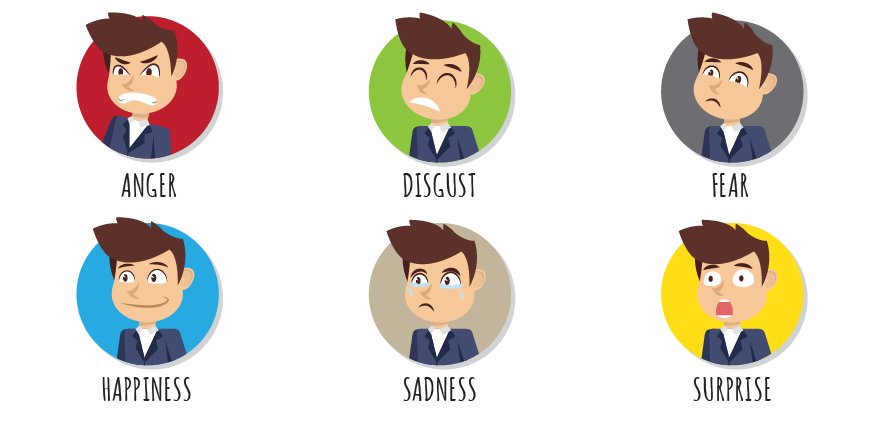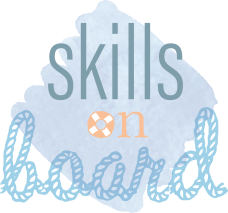11. Time Management
November 21, 2019Empathy
November 21, 2019
How Body Language Is Used in the Workplace
Communication in the workplace is essential to performing tasks and working as a team. The words spoken by staff members are only part of the communication puzzle. Body language communicates a colleague’s feelings or intentions. Those nonverbal clues may align or conflict with the words coming out of his mouth. An awareness of your body language helps you assess the message you are sending your colleagues.

Body language includes actions and ways of behaving. Eye contact is a body language indicator in the workplace. Maintaining eye contact shows interest, attention, confidence and honesty. Averting your gaze may cause a colleague to feel you aren’t being honest. The general facial expressions at work also indicate your feelings about the situation. Your overall posture also indicates your confidence and interest in what you are doing. Slumping in your chair during a meeting may cause others to sense that you are bored or not interested in the presentation. Hand gestures also play a role in workplace communication.
In a one-on-one or small-group situation, noting body language helps you uncover a lack of confidence, a problem in a current project or even dishonesty from an employee. By evaluating body language, you can identify potential problems and find solutions for them. If an employee doesn’t feel confident with a particular task, additional training or support is an option. If you sense that a problem with a project occurred, you can work to solve the problem.
We communicate on three levels: verbal, non-verbal and paralanguage. (the way we use our voice to add meaning to our message). Body language is referred to the means by which humans convey information through conscious or subconscious body movements, facial expressions and gestures. It is officially known as kinesics and it was first used in 1952 by an anthropologist named Ray Birdwhistell. Actually, body language can have a large impact on our thoughts and feelings, and that includes how we feel at work. But how much communication is not verbal?
Here’s a relevant VIDEO to watch! (Sound not perfect, but there are English subtitles!)
How to improve body language at the workplace
Interestingly, body language is not a non-learned neurobehavior; people can improve it. Here are eight tips to help you develop your body language when at the workplace and your life in general.
- Be Aware: Awareness can be considered as “half the battle”. By paying attention to what and when we do, we can better understand what it means.
- Learn from your colleagues: Look at other people, especially those you admire and collect useful information by their body language.
- Watch your body position: Always be aware of the ways of creating crosses with your body. We will see below that open posture and close “posture mirror” different characteristics with respect to friendliness.
- Make eye contact: Eyes mirror people’s soul. Don’t be afraid to look somebody in the eyes. Not only will you say a lot by doing so, but you might also learn a lot.
- Relax your shoulders: Holding your shoulders by your ears is a sign of tension. Relax, but make sure you’re not slouching.
- Give a firm handshake: It turns out that a handshake is more than just a simple gesture. If you’re seated, always rise before shaking someone’s hand. Make sure to use plenty of eye contact, smile warmly, and squeeze firmly, about as much as your partner does.
- Keep your hands visible: Do not hold your hands in your pockets. Though comfortable, it can indicate boredom or over-confidence. On the other hand, holding your arms behind your back with your hands clasped is a sign of confidence. This is great for public speaking as well.
- Relax: Adjusting your body language might feel unnatural at first. Applying the aforesaid techniques over time, you’ll communicate everything you want with your body!

References
Shelley Frost, “How Body Language Is Used in the Workplace” Chron magazine, https://smallbusiness.chron.com/body-language-used-workplace-11773.html
Apostolos Belokas, “Why body language is important in the workplace” Safety4Sea, Athens Forum, 2019 [Graphics from this article, all rights reserved © Safety4Sea]
Carol Kinsey Goman, Ph.D. “12 Body Language Tips For Career Success” Forbes Magazine, Aug 21, 2013 https://www.forbes.com/sites/carolkinseygoman/2013/08/21/12-body-language-tips-for-career-success/





